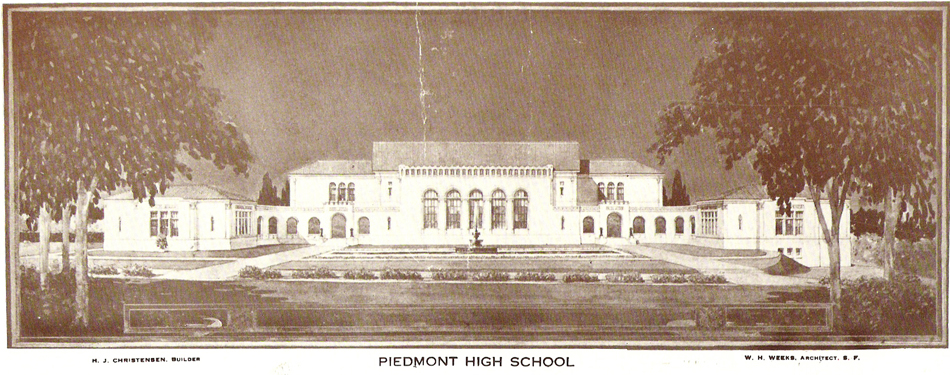The outline of the story is as familiar as it is tawdry: a group of high school boys turn sexual insecurity into a contest, and a contest into emotional brutality. Adults in their orbit express shock and outrage, and observers pretend that the migration of teen sleaze onto the Internet represents something new. But why are we surprised by something that is a persistent feature of the (young, male) human condition, and a staple plot in teen raunch movies?
Piedmont is a small town in Northern California, completely surrounded by Oakland the way Lesotho is encircled by South Africa. Only in the Californian case, the surrounded entity is an island of relative prosperity, calm and really, really good schools. It has been around for over 100 years but still, the city seems to exist primarily to justify its own public school district.
That’s probably why a recently exposed “fantasy slut league” at Piedmont High School has caused a significant furor throughout the state. (That, and because it gave a lot of people the chance to say “fantasy slut league.”) In the competition, modeled after fantasy sports leagues, male students apparently “drafted” their female classmates and earned points for “documented engagement in sexual activities” with them, according to a letter sent to parents by the Piedmont High principal.
What happened in Piedmont is deplorable. But it was also predictable, and avoidable. Evidence from every imaginable field of study, from psychology to zoology to ethnography to archaeology suggests that young males have always been aggressive and competitive when it comes to sex. That offers neither excuse nor pardon to the louts in Piedmont. But biology – and common sense – support the notion that the boys could have been helped. Or at least stopped.
How’s that? The elephants of Pilanesberg National Park in South Africa offer a clue. Male elephants famously go through periods of heightened aggression and sexual activity called musth. It’s apparently quite the hormone ride – testosterone levels can jump by a factor of 60, and stay that way for weeks or months. Pilanesberg was plagued in the late 1990s by a gang of young orphaned males, prematurely in musth and handling it poorly — by killing more that 40 white rhinoceroses, for example.
But something dramatic happened when researchers introduced six mature male elephants to the park: the young guns dropped out of musth, stopped terrorizing rhinoceroses, and presumably went back to being the elephant equivalent of nice young men.
What does Pilanesberg have to do with Piedmont? Evidence shows that in humans too, the young male impulse to gang up together and commit acts of violence – physical, sexual, emotional – is similarly damped by the presence and engagement of older men.
You know it’s true. But it’s so true, it shows up in global-level data on ethnic conflicts and civil wars, for example. Put simply, as the ratio of young males, aged 15-29, goes up relative to older males, 30 and older, in any society, the probability of a Pilanesberg-level shit-storm goes up, too. And that age structure imbalance is baked right into what a high school is.
What happened in Piedmont is a long way short of a war, of course. And we don’t know exactly how aggressive and coercive the “documented … sexual activities” were. Still, it went on for five years or more, according to the principal’s letter, and I’d be surprised if hasn’t caused real damage to a lot of people.
Fortunately, even a few older men can set the expectations and consequences necessary to keep younger men in check. I don’t now whether the teachers and dads of Piedmont tried and failed, or failed to try. Demographically, it’s likely the perpetrators came primarily from intact nuclear families, and had regular contact with potential male role models, including parents, teachers and coaches. (I forgot to mention — the boys were all student athletes. But you kind of assumed that anyway, didn’t you?)
But simple involvement isn’t enough. Older males have to model respectful behavior, and enforce it. They have to take up the often awkward, deeply time-consuming, sometimes impossible task of challenging and changing “boy culture” long before it goes too far. And they have to provide alternative outlets for the energy, aggression and insecurity that otherwise are so easily funneled into intimidation and ostracism, bullying, assault and rape.
There’s nothing inherently fiendish in teenage boys. But there is plenty that is inherently, rawly human and that’s plenty bad enough. The problems start when adults forget that reality, and start treating them as angels instead.
***
Image: Piedmont High School in 1922, shortly after it opened. Wikipedia.

“Evidence from every imaginable field of study, from psychology to zoology to ethnography to archaeology suggests that young males have always been aggressive and competitive when it comes to sex.”
That’s true. Sad, sexist, methodologically flawed evidence.
Weird! But I’m not surprised. I covered high school sports in Piedmont for nearly two years, and from what I gathered from student-athletes, there was a very seedy sexual underbelly to the goings on there